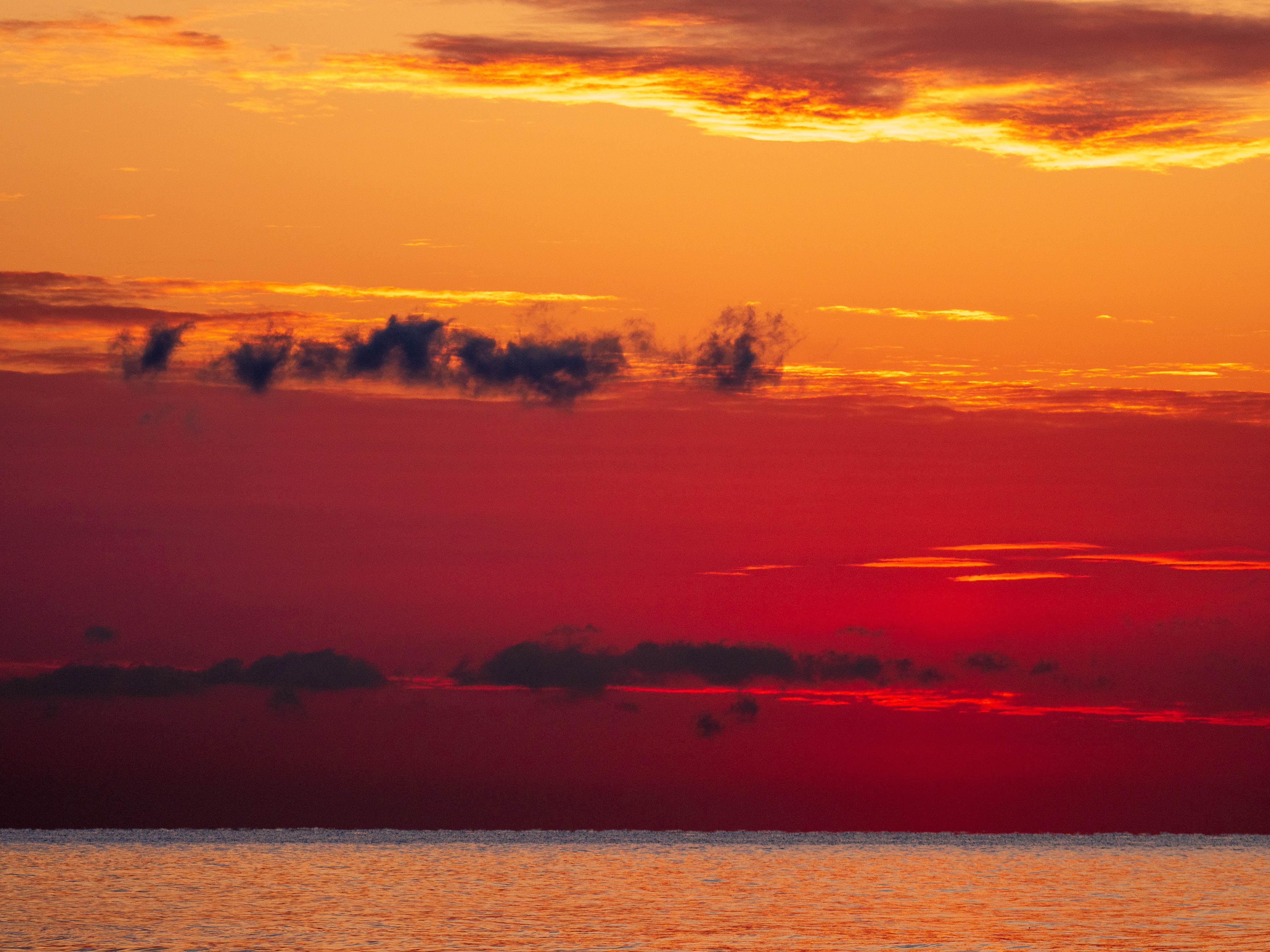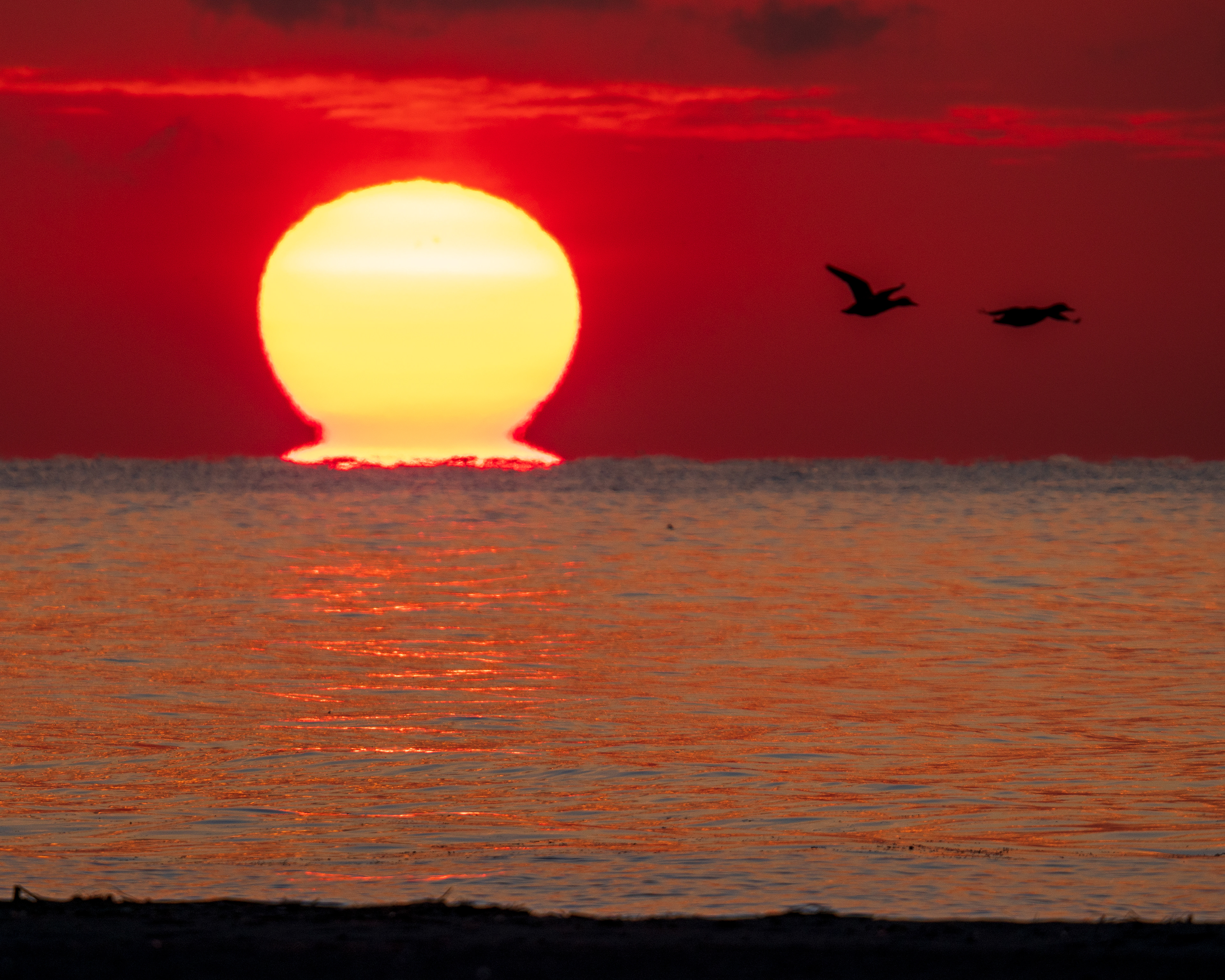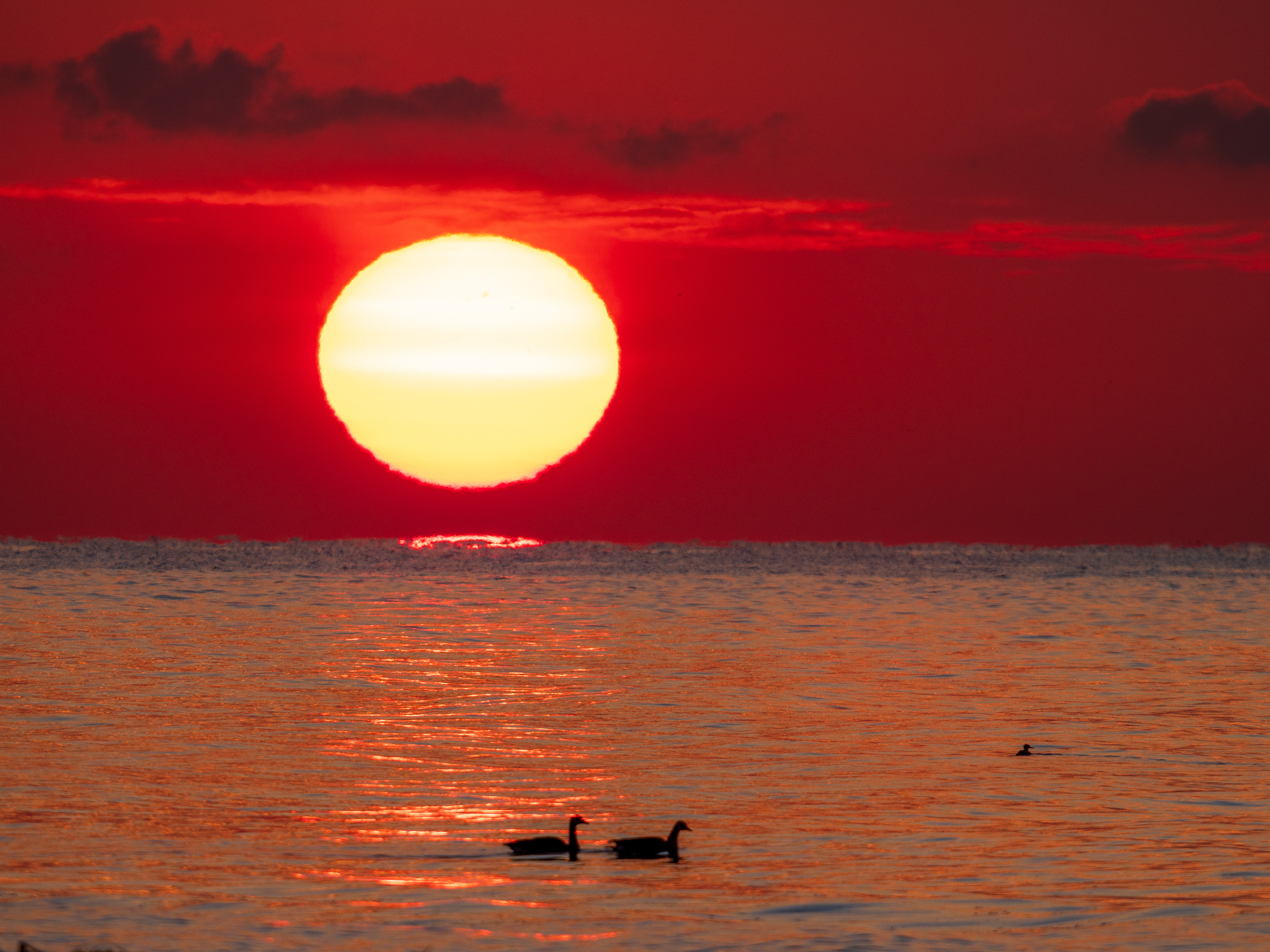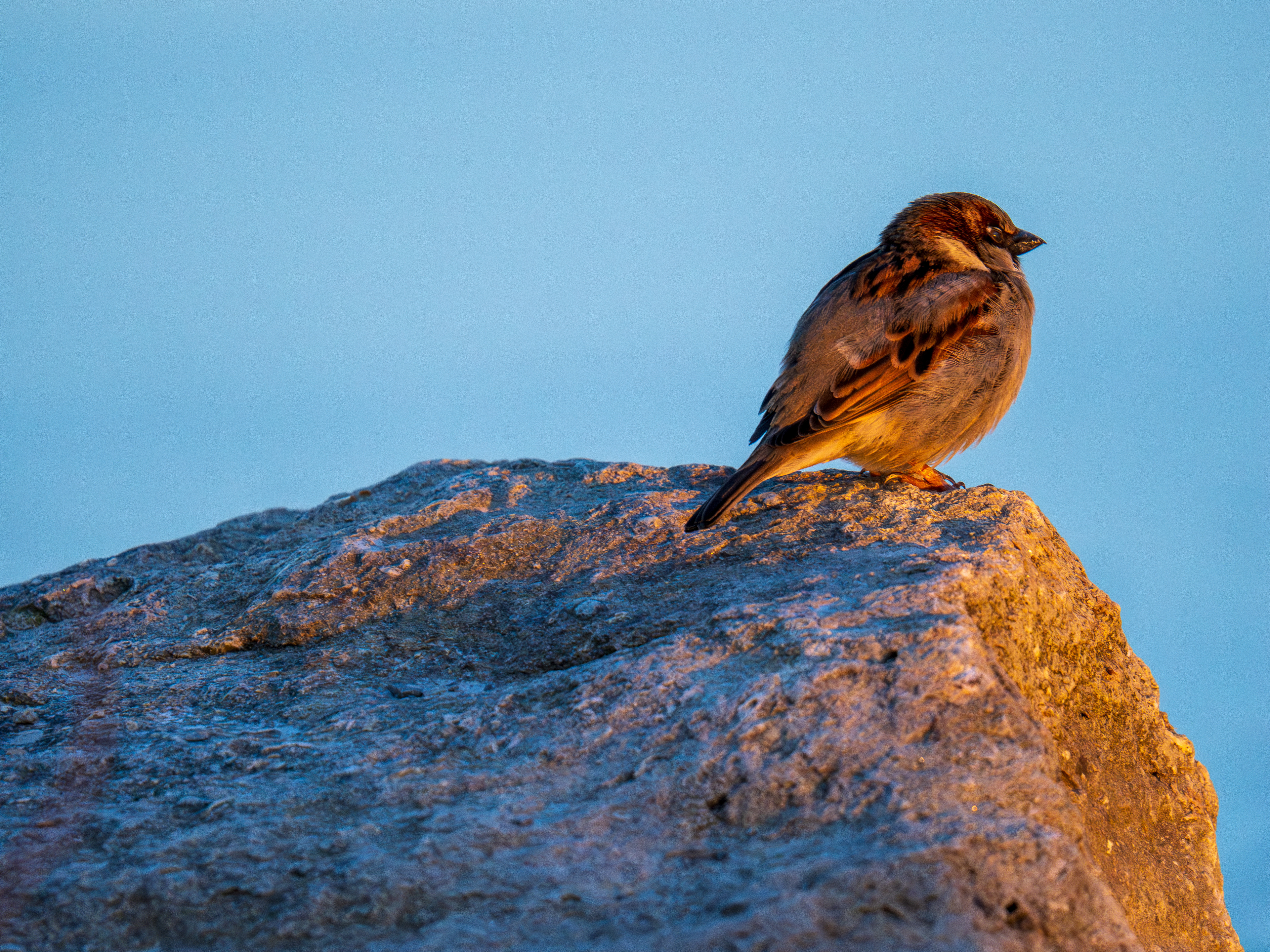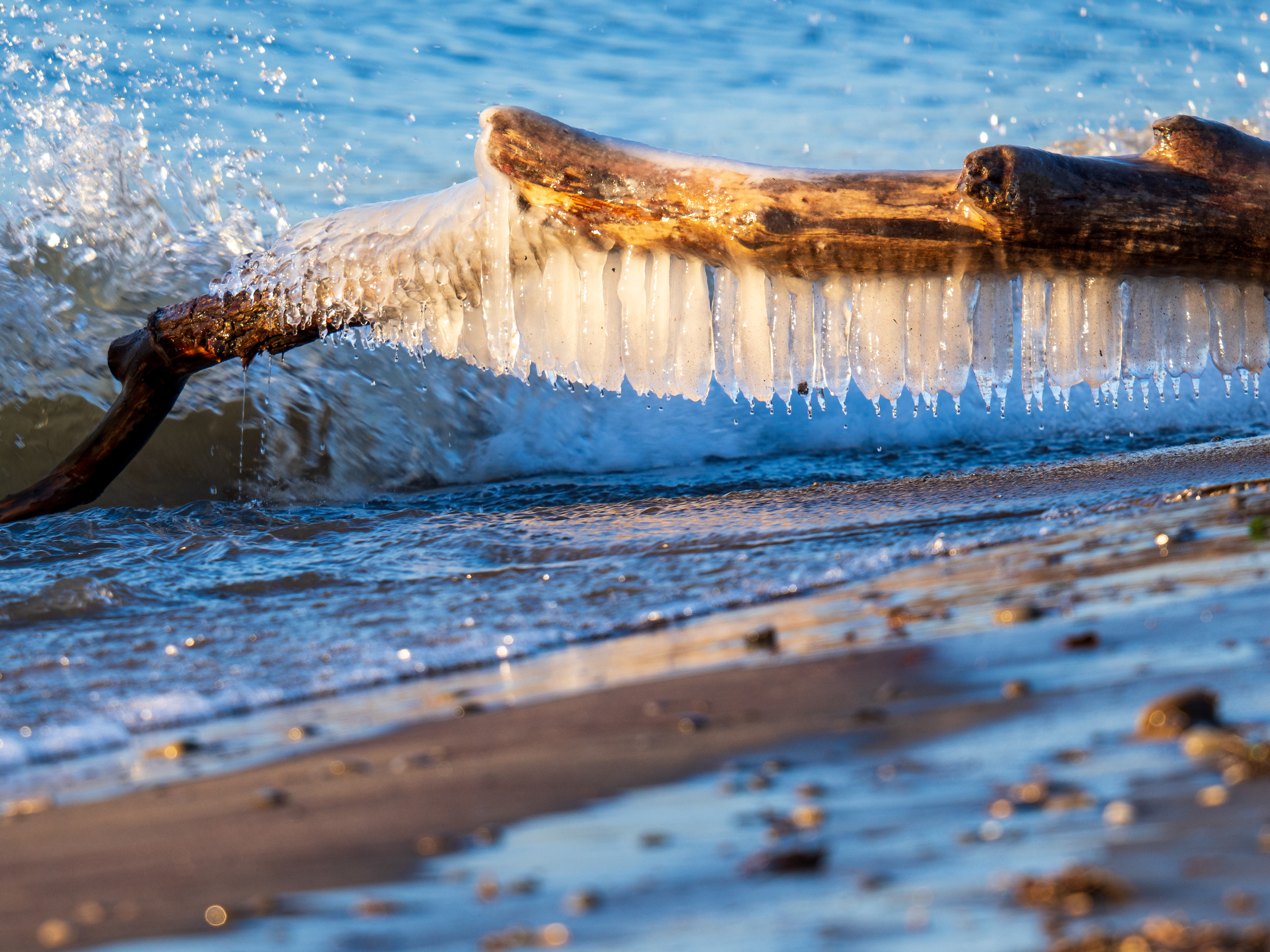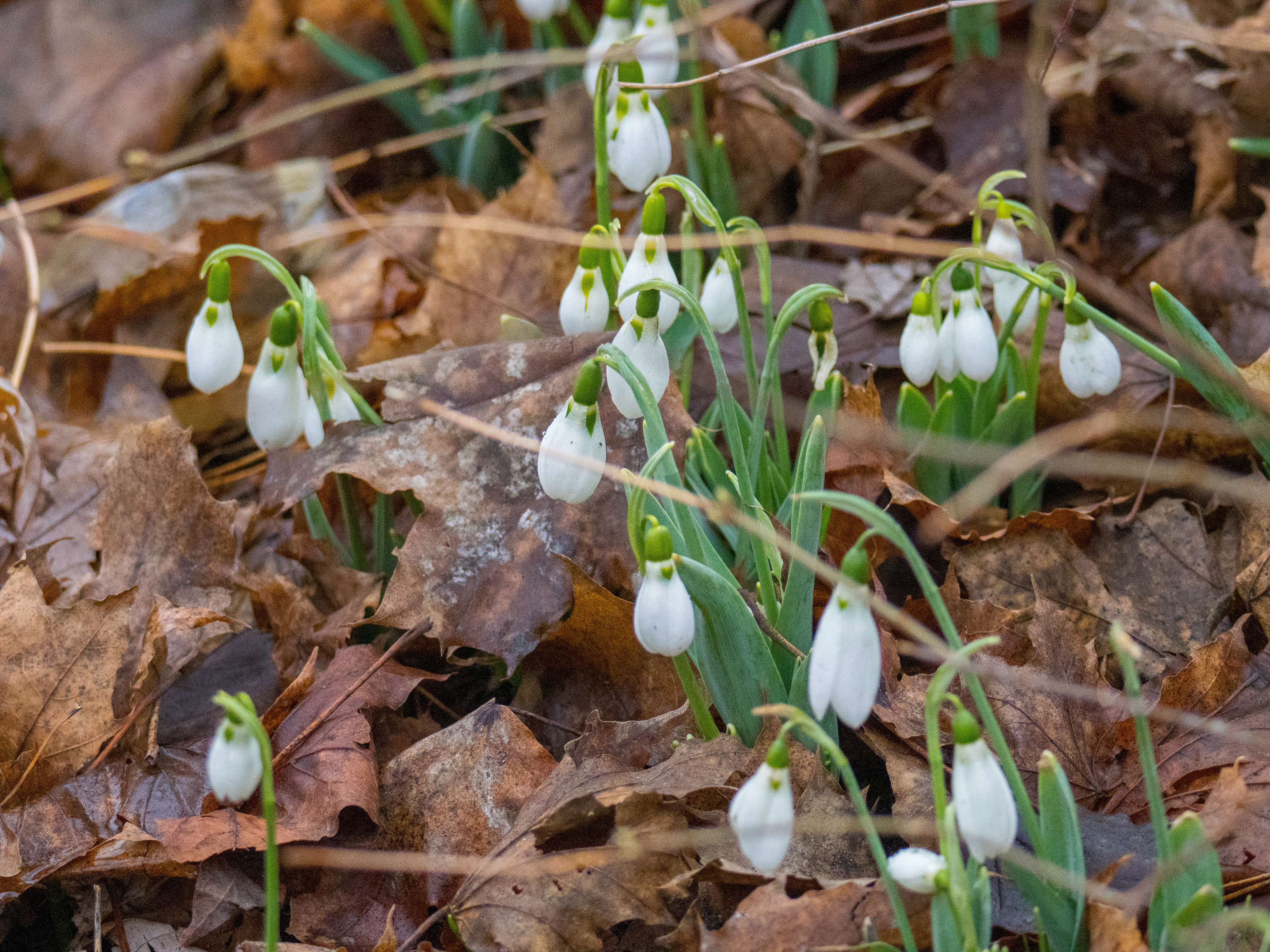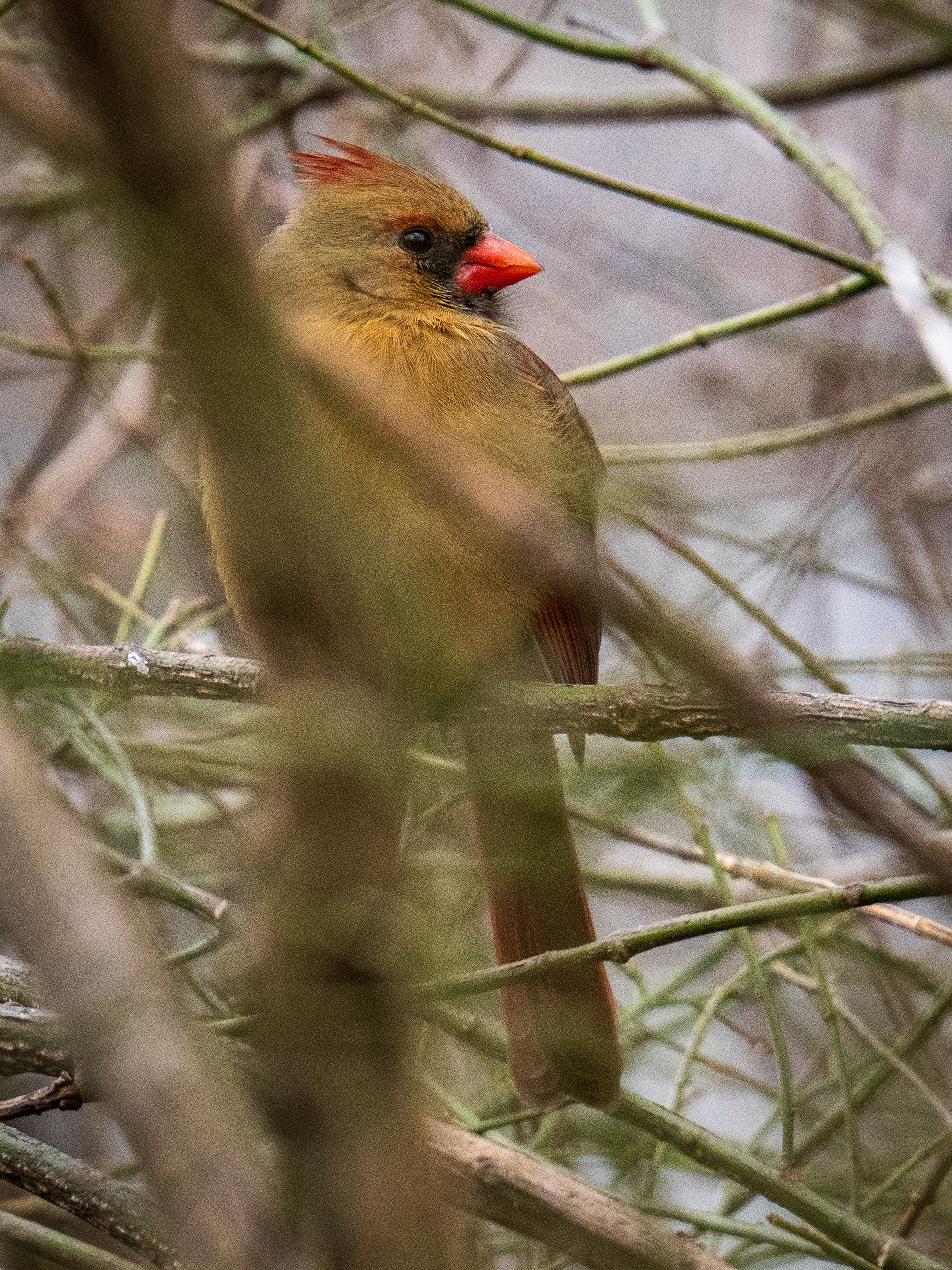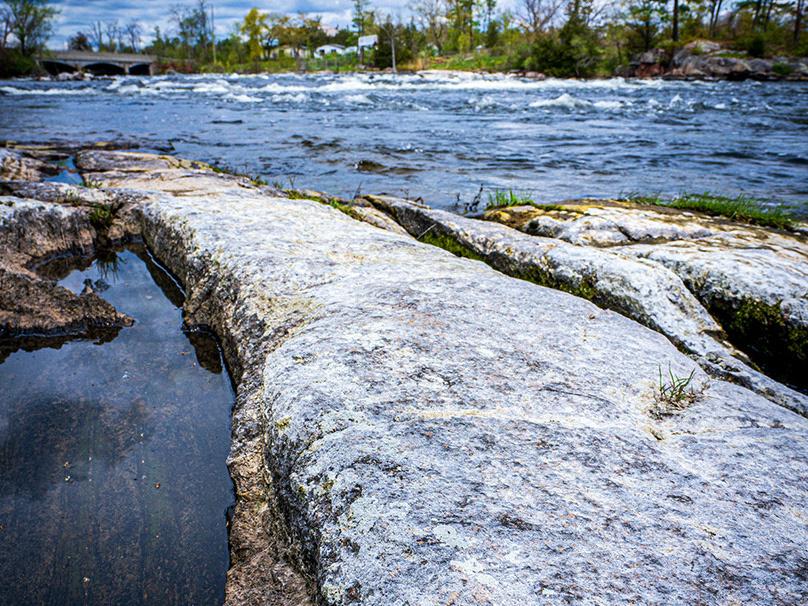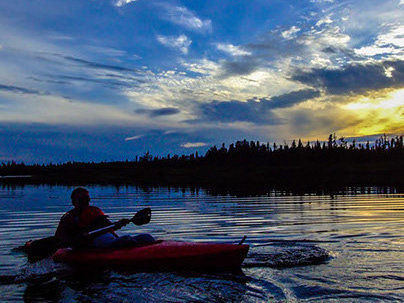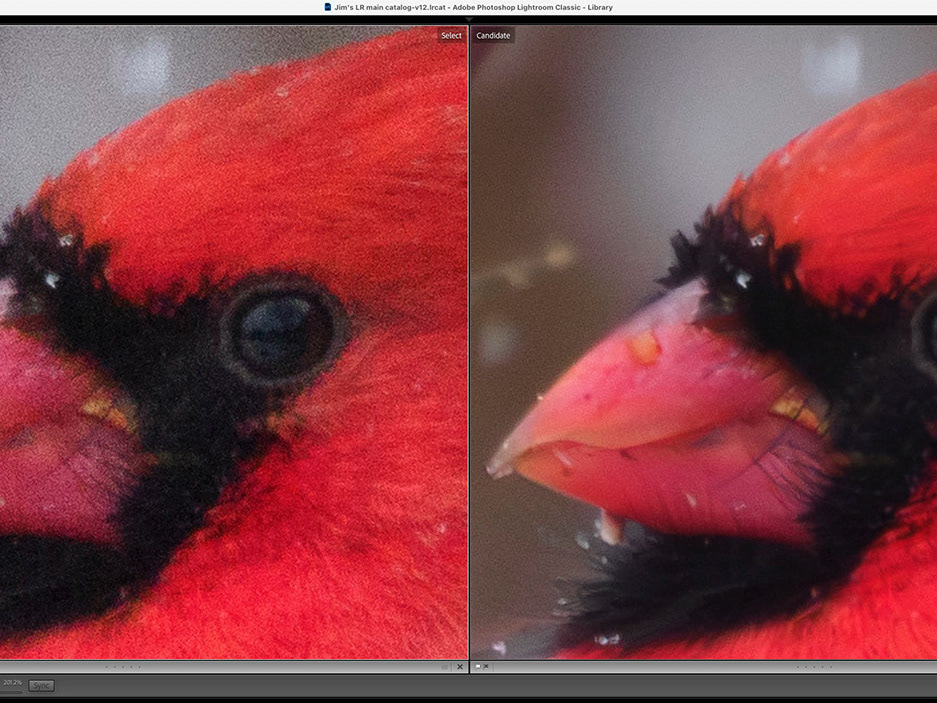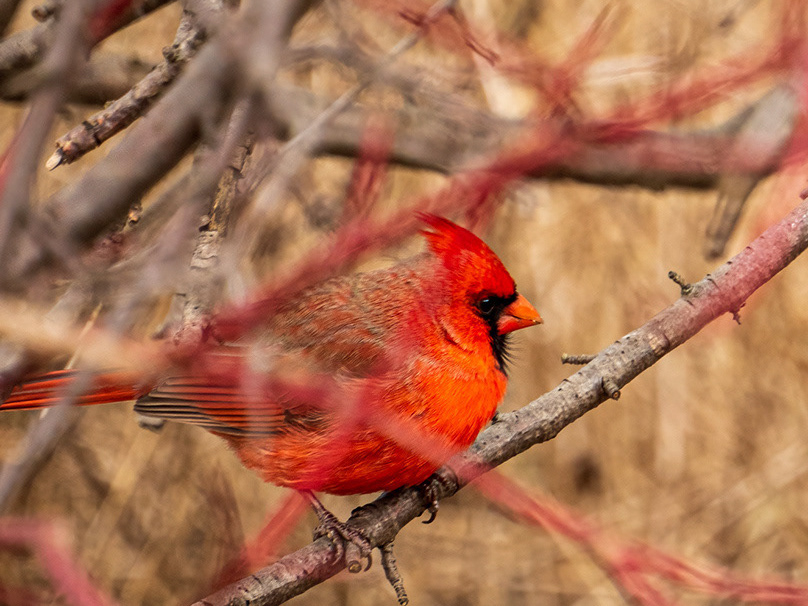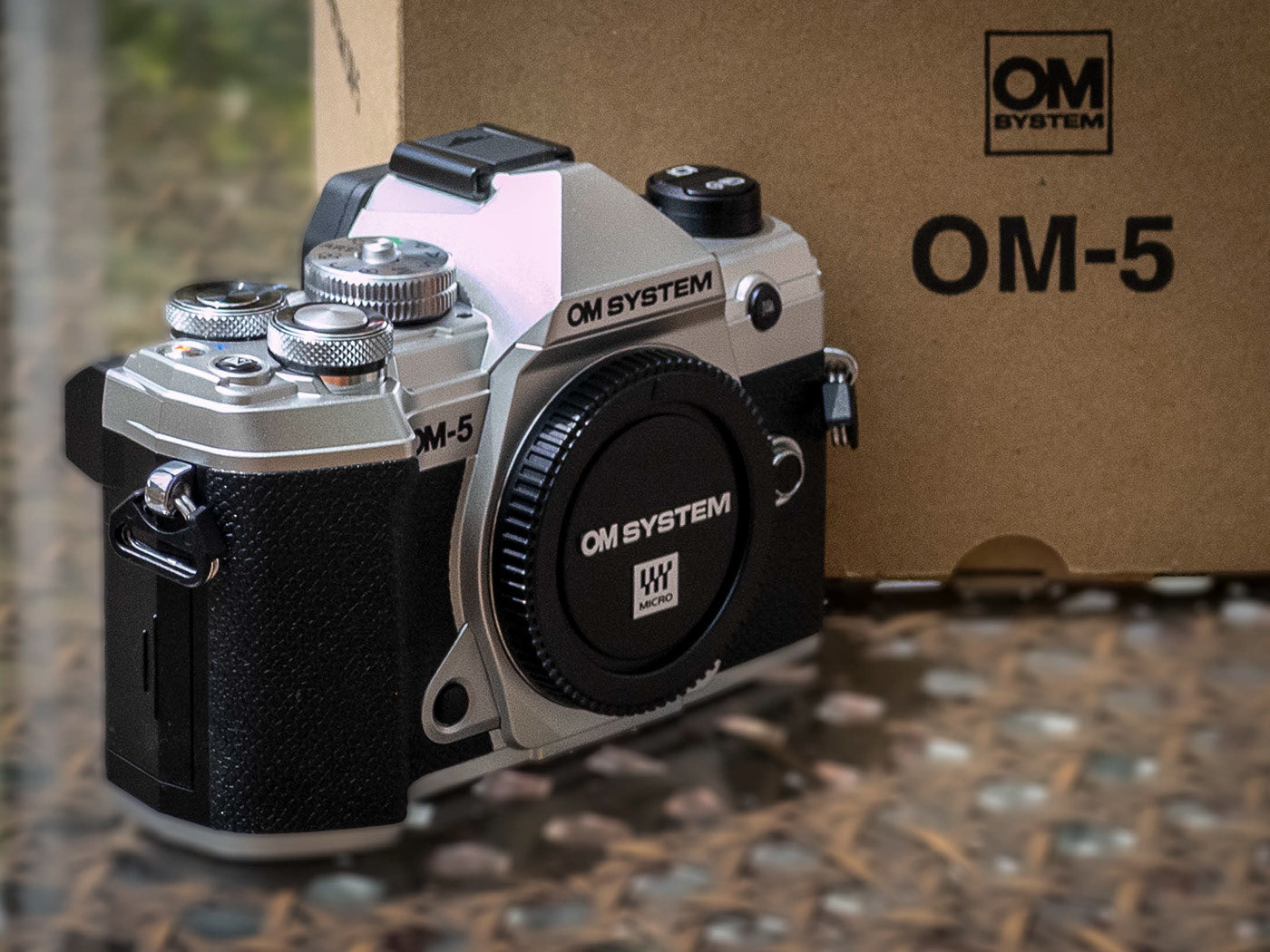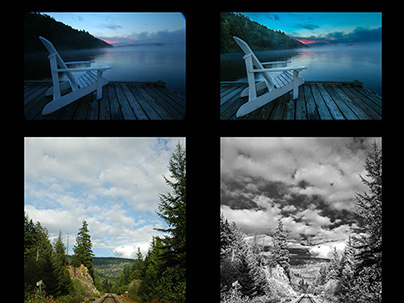First Impressions of a New Camera
The new OM-1 Mark II and the Zuiko 150-600mm lens
Very recently - as in the day before writing this article, recently - I made a fairly substantial upgrade to my camera gear. For the first time, I purchased a flagship camera body - the new OM-1- Mark II and a seriously powerful 150mm-600mm zoom.
Note: This article is not meant an an in-depth gear review; you'll find plenty of those on Youtube if that is what you're looking for. This article is more of a new user's perspective of the kit.
I don't normally make big purchases like this, especially not so soon after a prior purchase from last June (that's when my OM-5 came on the scene, as a replacement for my EM-5 Mark III). However, I had been using the OM-5 extensively these last few months and really appreciated some of the pro-level features such as Live ND and Hand Held High Res mode and the outstanding In-Body-Image-Stablization (IBIS). The new OM-1 has all this and more, and thanks to a rather healthy commission payout from work, I was in a position to consider the purchase.
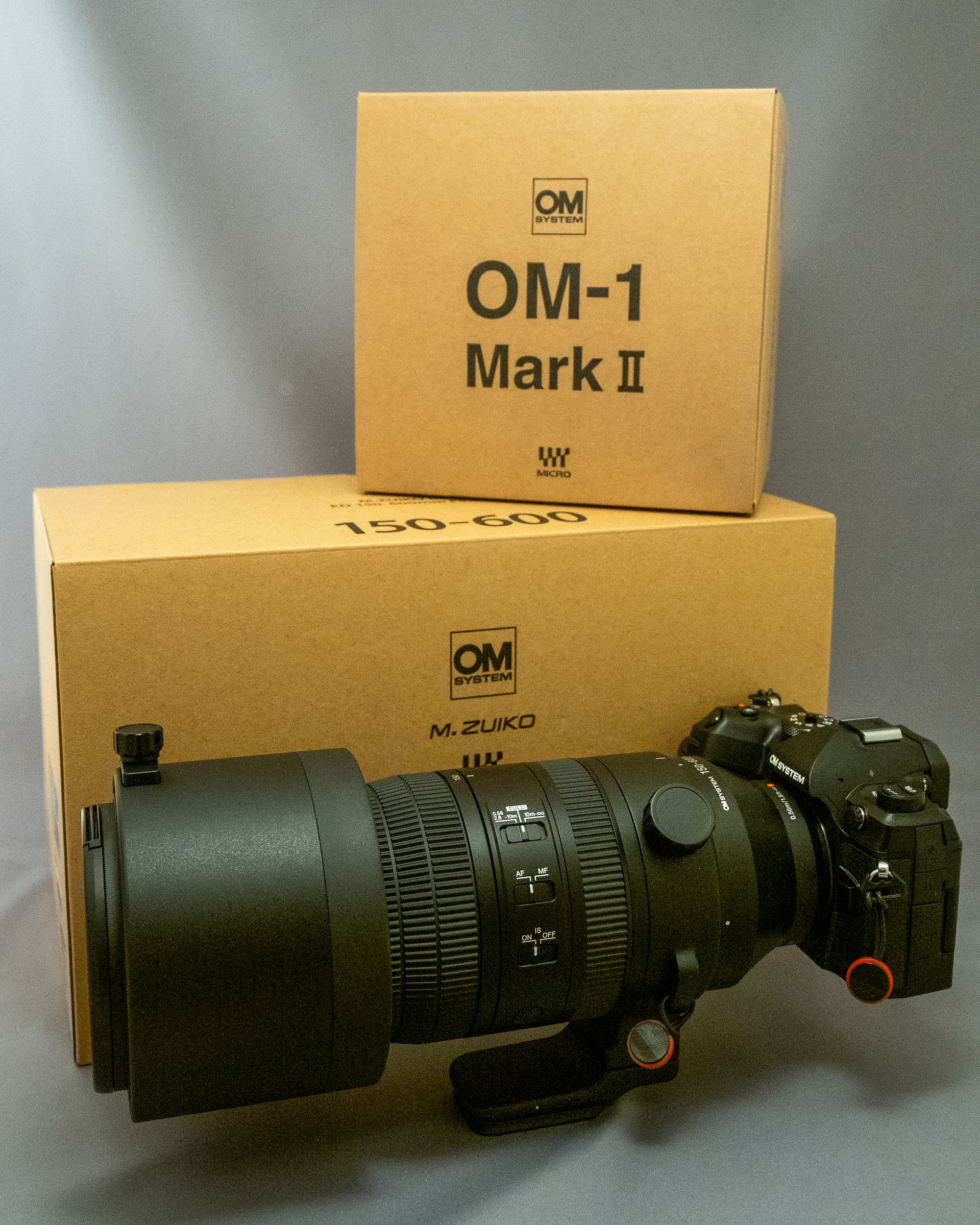
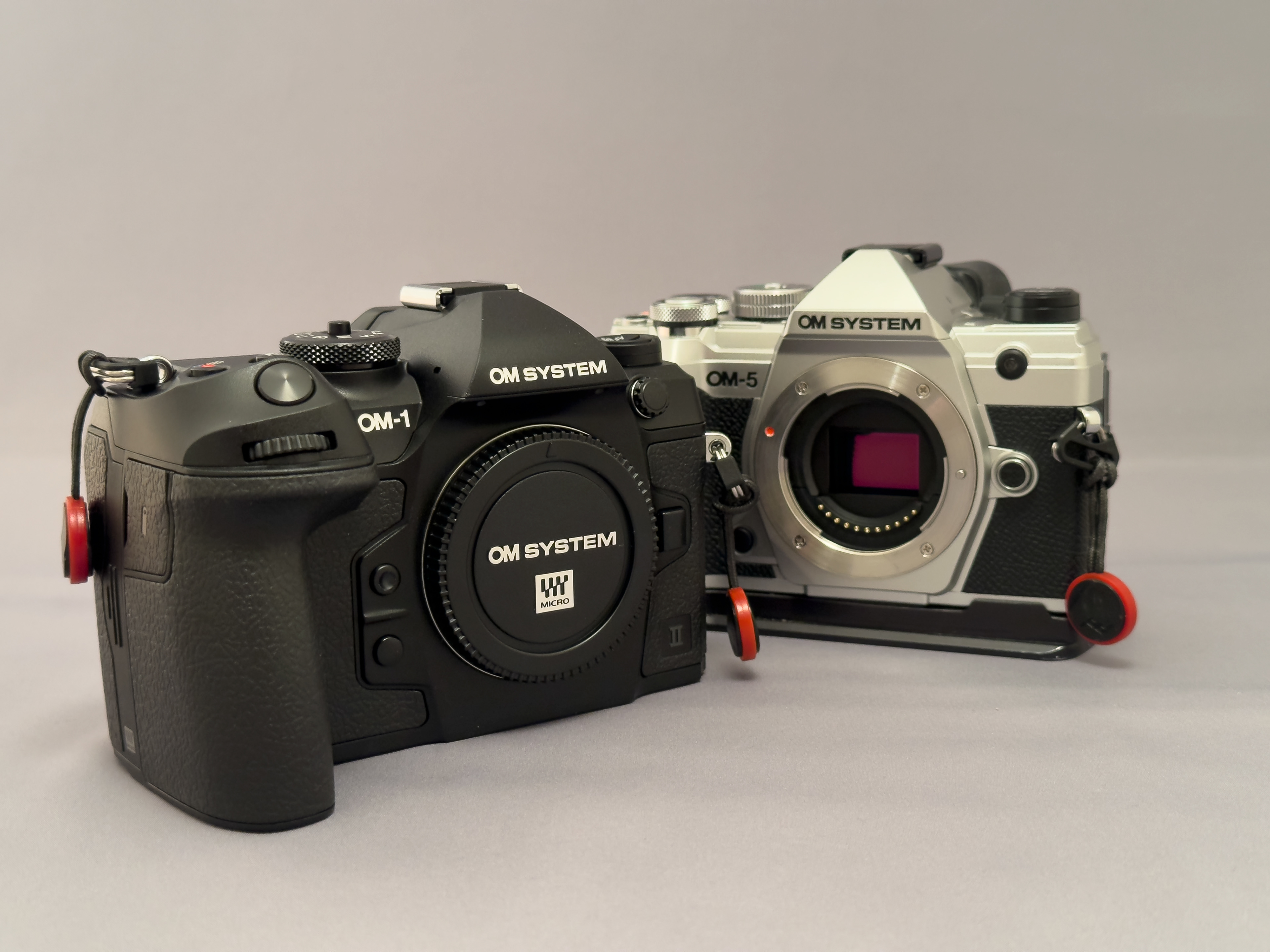
There were some casualties in this purchase; I traded in my original EM-5 Mark III (25,000 actuations, OMG!), my much-loved Zuiko 100-400mm zoom, a couple kit lenses and a tiny little Panasonic Lumix kit that was no longer being used. This help shave off a decent portion of the cost of the new gear.
The Camera
Considering the lens, it's a little ironic that I was concerned about how much larger the camera body might be when compared to my OM-5. As it turned out, the OM-1-II is not that much bigger than my OM-5, but there are some noticeable differences:
The Handgrip
OMG! I had no idea how much I missed a truly integrated and substantial handgrip until I put the OM-1 in my hand! The camera just felt...right. My OM5 has a third party handgrip/L-bracket from Haoge, but it's not as comfortable as the built in grip on the OM-1. The larger grip also makes it easier to hold the 150-600mm lens.
Overall Build Quality
The camera feels solidly built, that it can take some rough treatment. Although in general, I'm pretty respectful of my gear; I won't be dropping it in the snow or on a sandy beach to exemplify its weather resistance.The textured, rubberized surfaces on the body give a good tactile feel and also make the camera feel nice and "grippy." It's not going to easily slip from my hand.
Image Stabilization
I know that Olympus and now OM Systems are known for their IBIS, but holy cow! With the 150-600mm attached and fully extended you NEED good IBIS to compose pretty much anything, even if it's a piece of half-buried driftwood. Between the IBIS and lens IS, this combination really delivers. My framing went from looking like I'd had 6 too many espressos to nearly tripod-like stability. This summer, I'll see how good it is when shooting from the kayak...
Aesthetics
This is one area I do find lacking, but this is totally a subjective thing; I LOVE the vintage look of my two-tone OM-5 (and it's predecessor, the EM5-3). While the solid black finish of the OM-1 may make it look more "professional" - and make no mistake, this IS a professional-grade camera - I'm still a sucker for the retro look of the OM-5.
The Menu System
What can I say? Kudo's to OM Systems for making an easier to use menu system. It's quite intuitive, especially when compared to my OM-5.
The Lens
This is a giant of a lens, there's no way around that fact. Side by side, it made my substantial 100-400mm zoom seem rather diminutive in stature.The weight is noticeable, but manageable for short hand-held stints. If I'm plunking myself down for any length of time, I'd likely be pulling out a tripod or monopod. That said, every photo you see in this article was captured hand-held. I did have the foresight to attach Peak Design anchors to the lens, and a PD Slide strap to help manage the weight.
Overall Build Quality
The lens feels very solid and well-made. The zoom action is quite smooth, and it has a nifty feature regarding zoom; not only can you lock the lens to avoid the barrel creeping with gravity, you can also choose a tight or smooth zoom lens tension. I found with my testing the smooth, more frictionless setting to be the most useful. Useful also is the focus limiter options. I had this switch on my 100-400 as well, and it cuts down a bit on focus seeking.
I'm not a big fan of the lens hood mount; I prefer some sort of bayonet-style mount for the shade, but I'm guessing the locking thread style could be beneficial for those using large external filters that need to rotate? Maybe? I could be way off on that.
Despite my comments on size, it’s worth noting that a full-frame equivalent lens (300-1200mm) would be significantly larger, heavier (and more costly).
Autofocus
In a word - FAST! In more than a word, fast, quiet and accurate, although - and this is very likely user error - the lens did have some issues focussing when I was shooting the sunrise itself, which I thought odd. This will take more testing to see where the issue is.
For possibly the first time - ever - I successfully captured a bird in flight, thanks to the lightning fast autofocus and the AI-powered bird detection/tracking. I'm pretty sure I was panning to follow the goose as well!
One of the reasons I was interested in this camera was the AI-powered subject detection features, especially for birds. My experience so far is that it works very well.

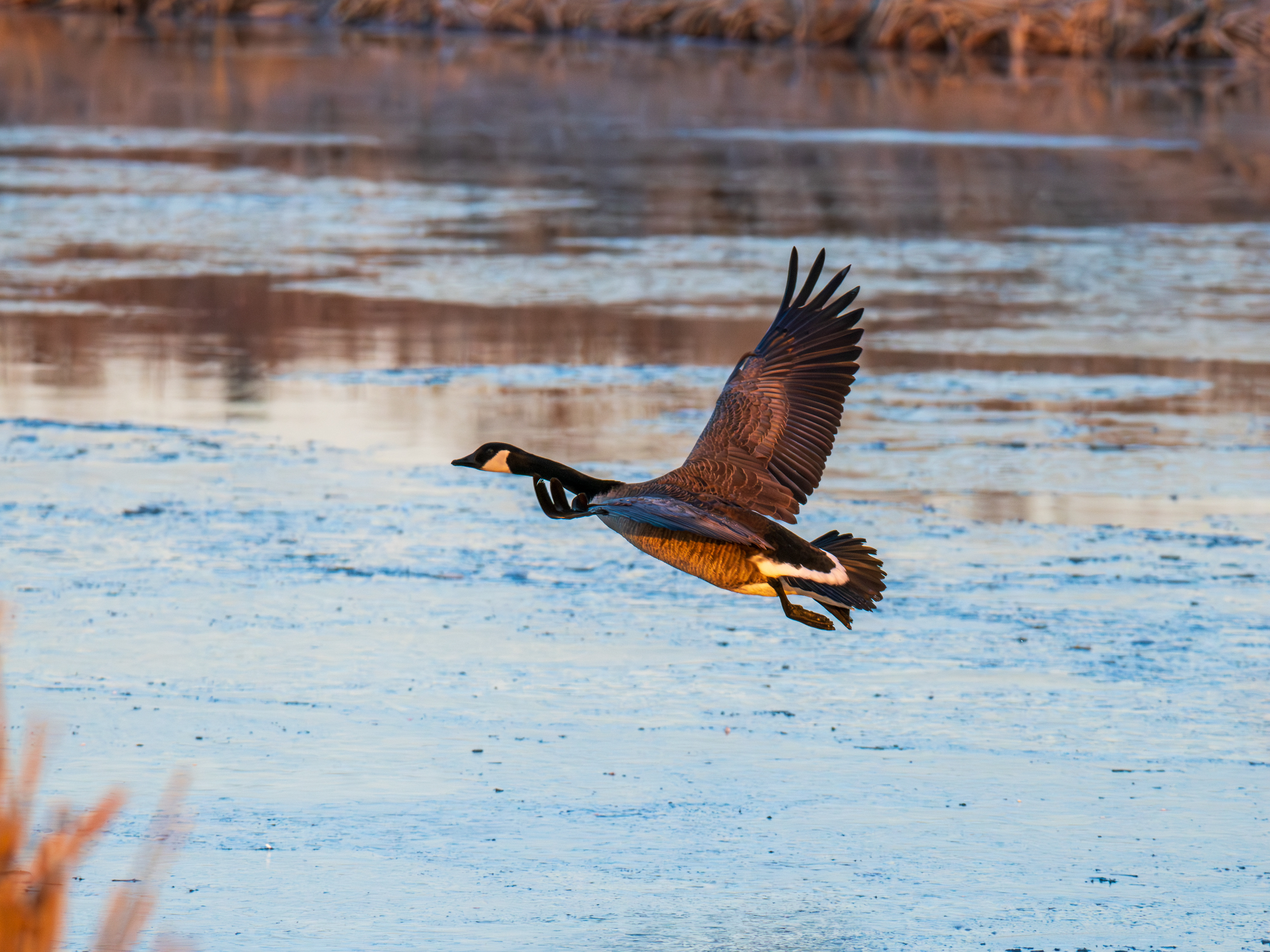
Settings: ISO 3200, 1/3200th sec, f/5.6, 229mm
Left: cropped, no Noise reduction; right: uncropped, Lightroom AI Denoise applied.
Left: cropped, no Noise reduction; right: uncropped, Lightroom AI Denoise applied.
With a lens of this focal length, I'm still learning to anticipate framing of nearby moving objects, like this swan. Fortunately, I can call on Adobe Firefly through Photoshop to fill in the missing bits, if I want.
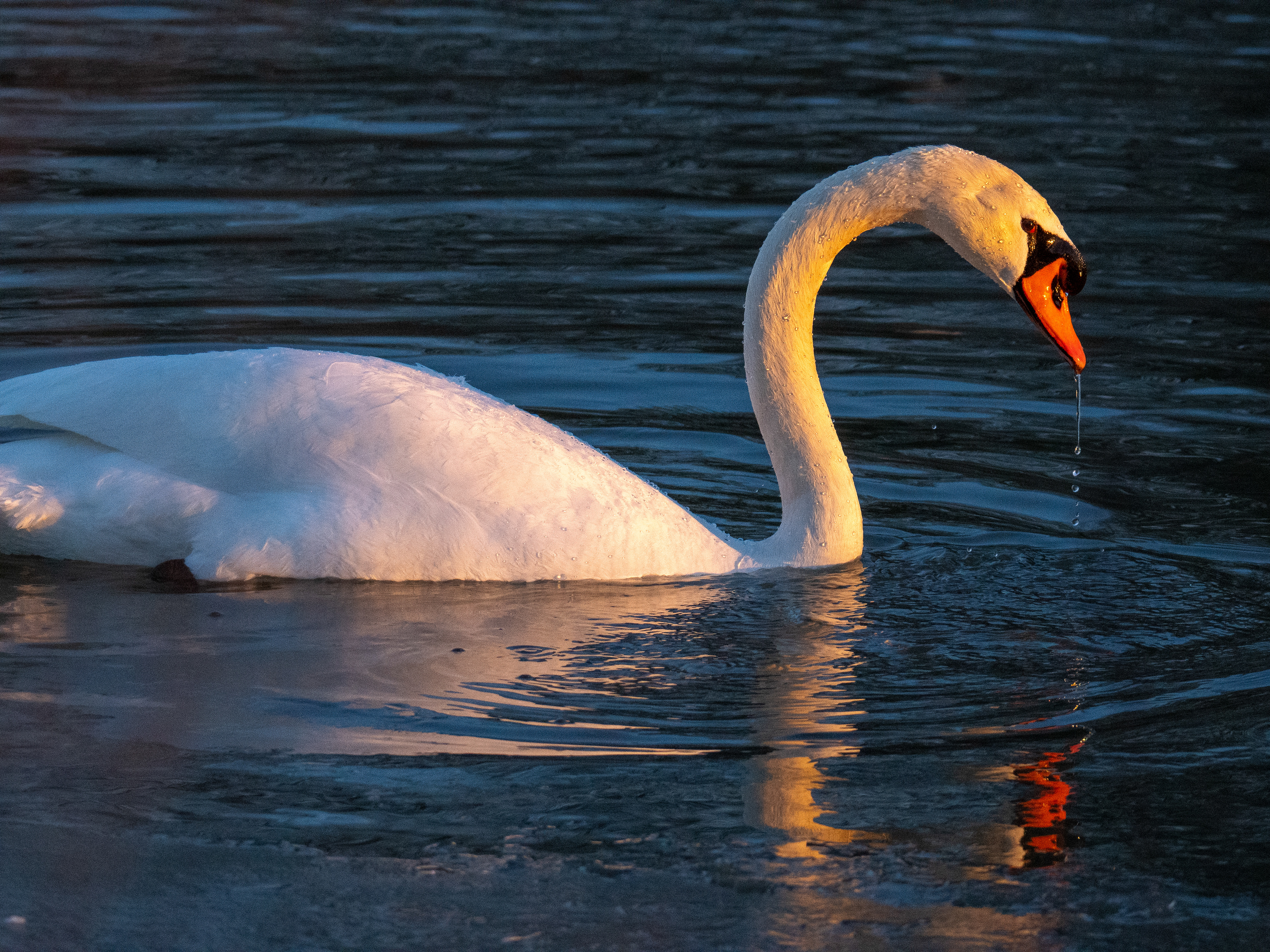
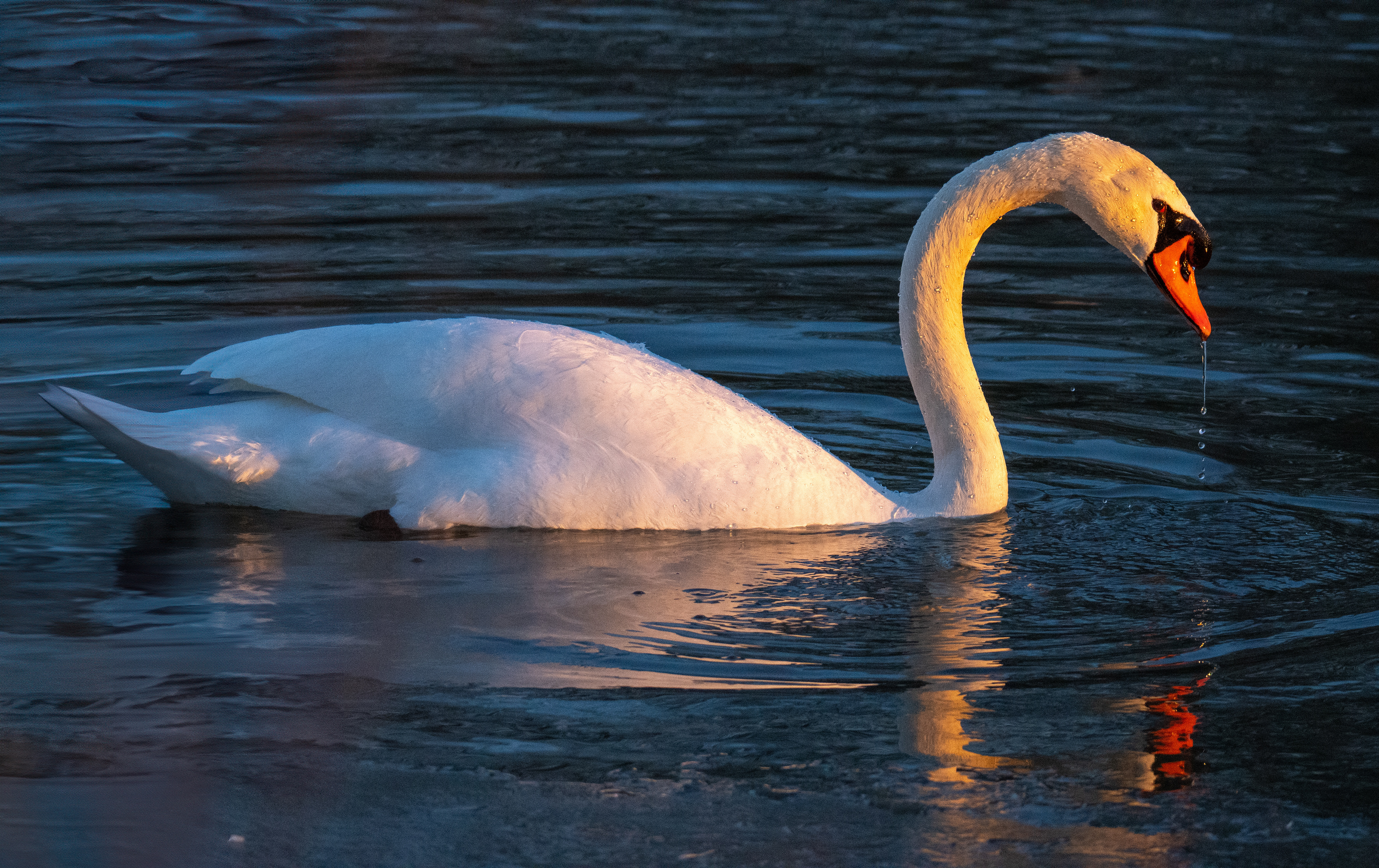
Original capture on the left; on the right, a new version using Generative Fill in Photoshop to add a tail into the frame.
Image Quality
This lens is not only fast with focus, but in my - admittedly limited and unscientific – testing so far, I’ve found the images to be very sharp. I’ve been primarily shooting fairly wide open and at high ISO, due to the lighting conditions. But I’m seeing great detail in bird plumage, texture in driftwood, sand and water.
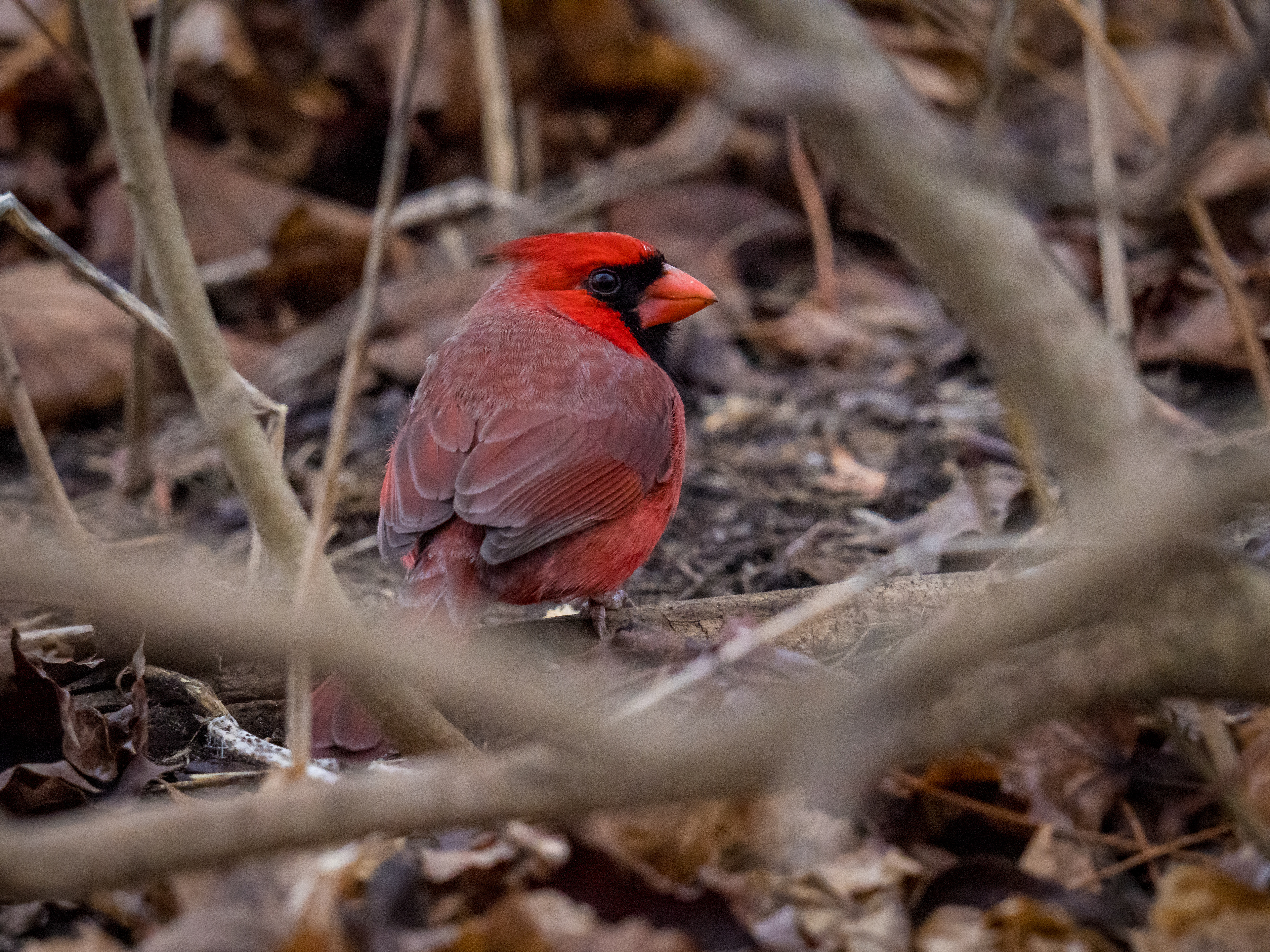

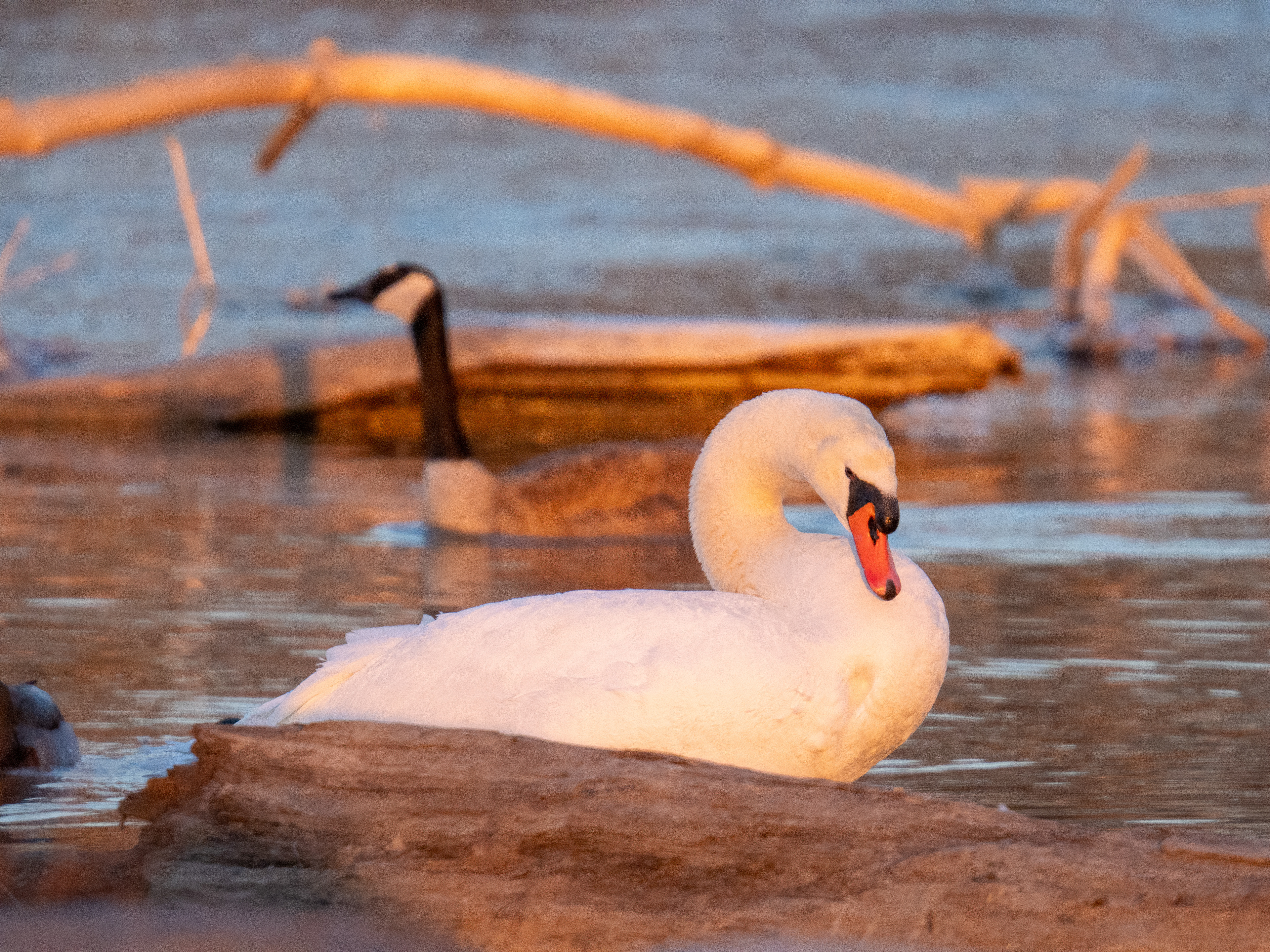
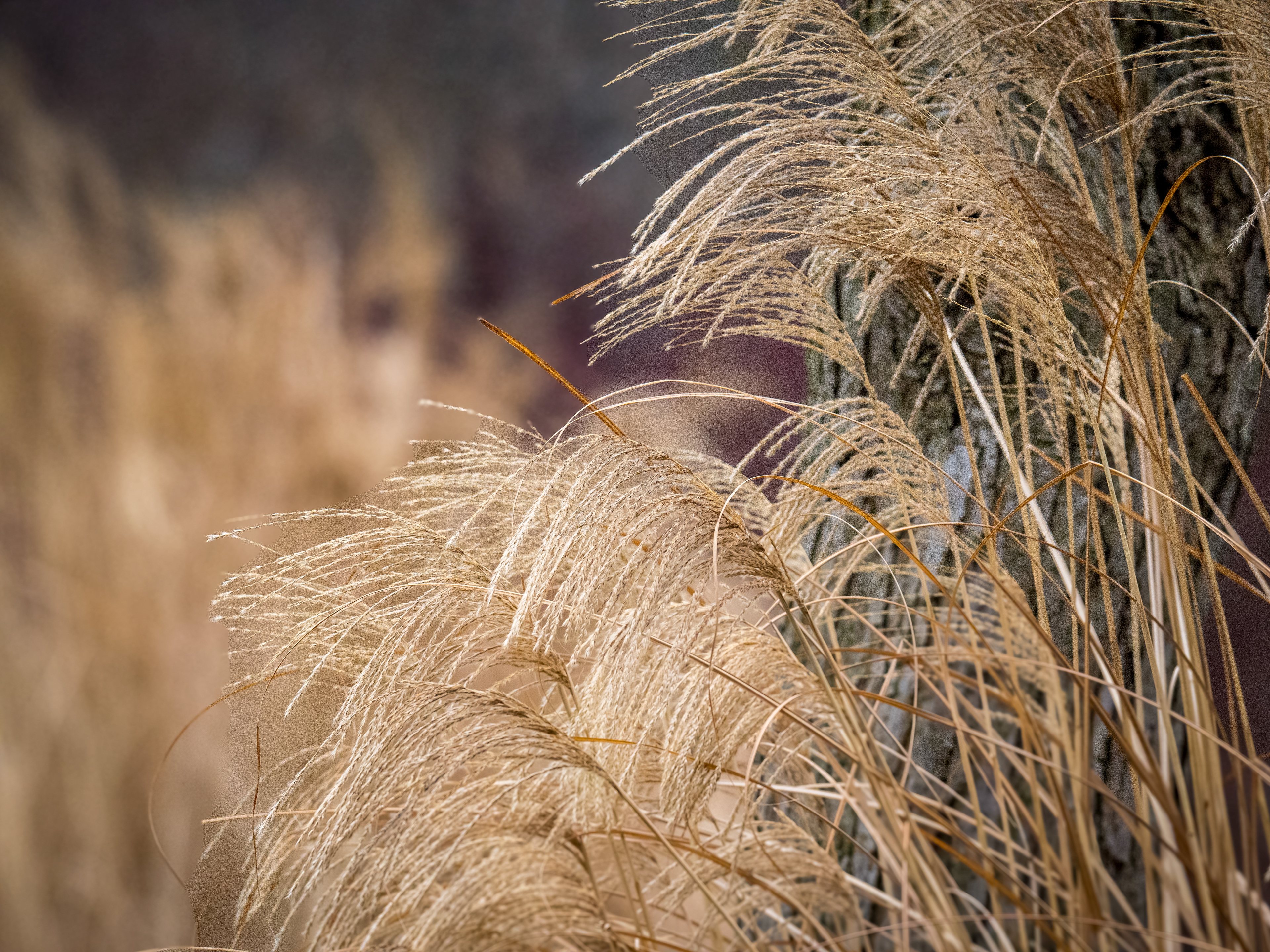
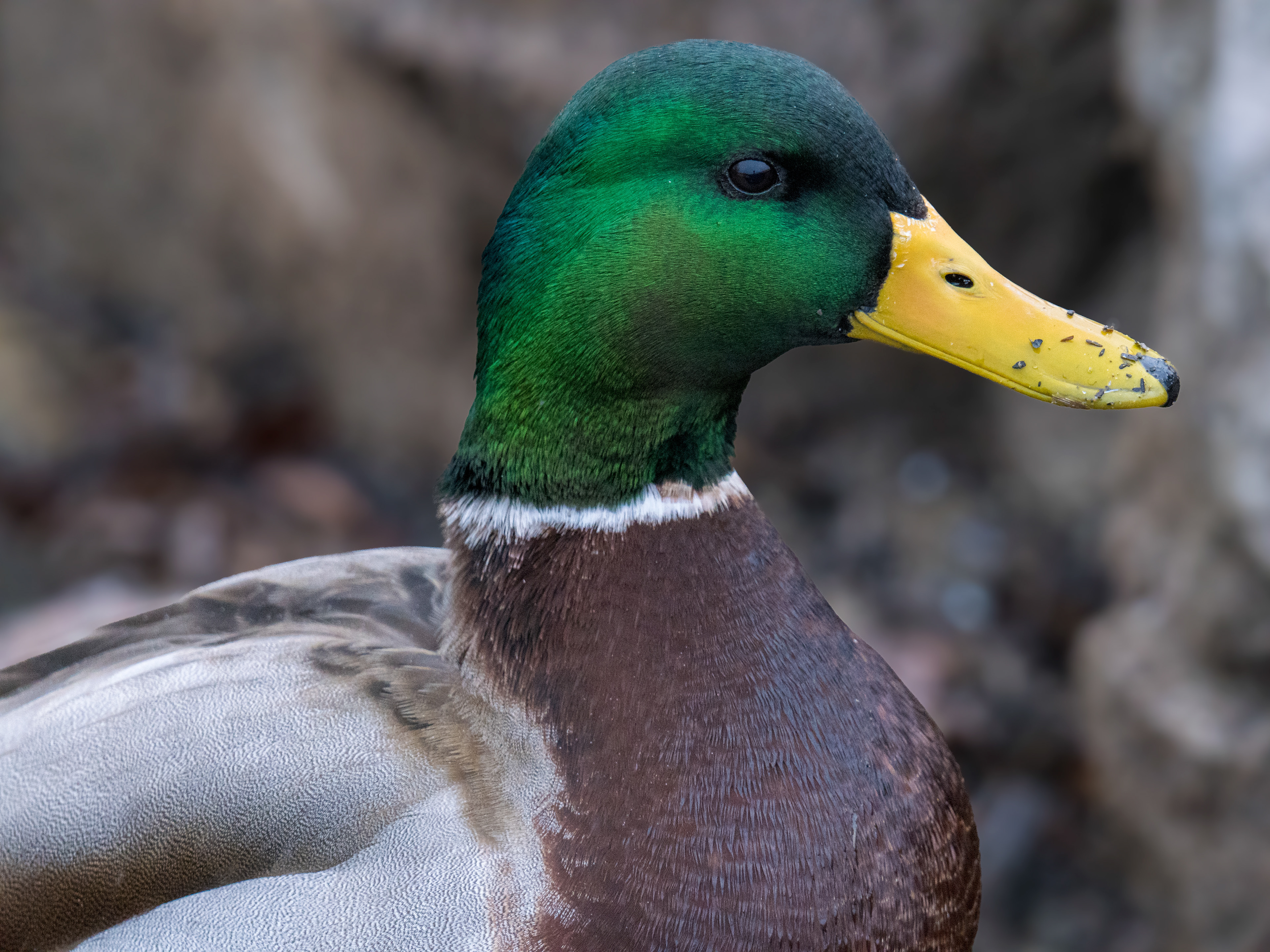
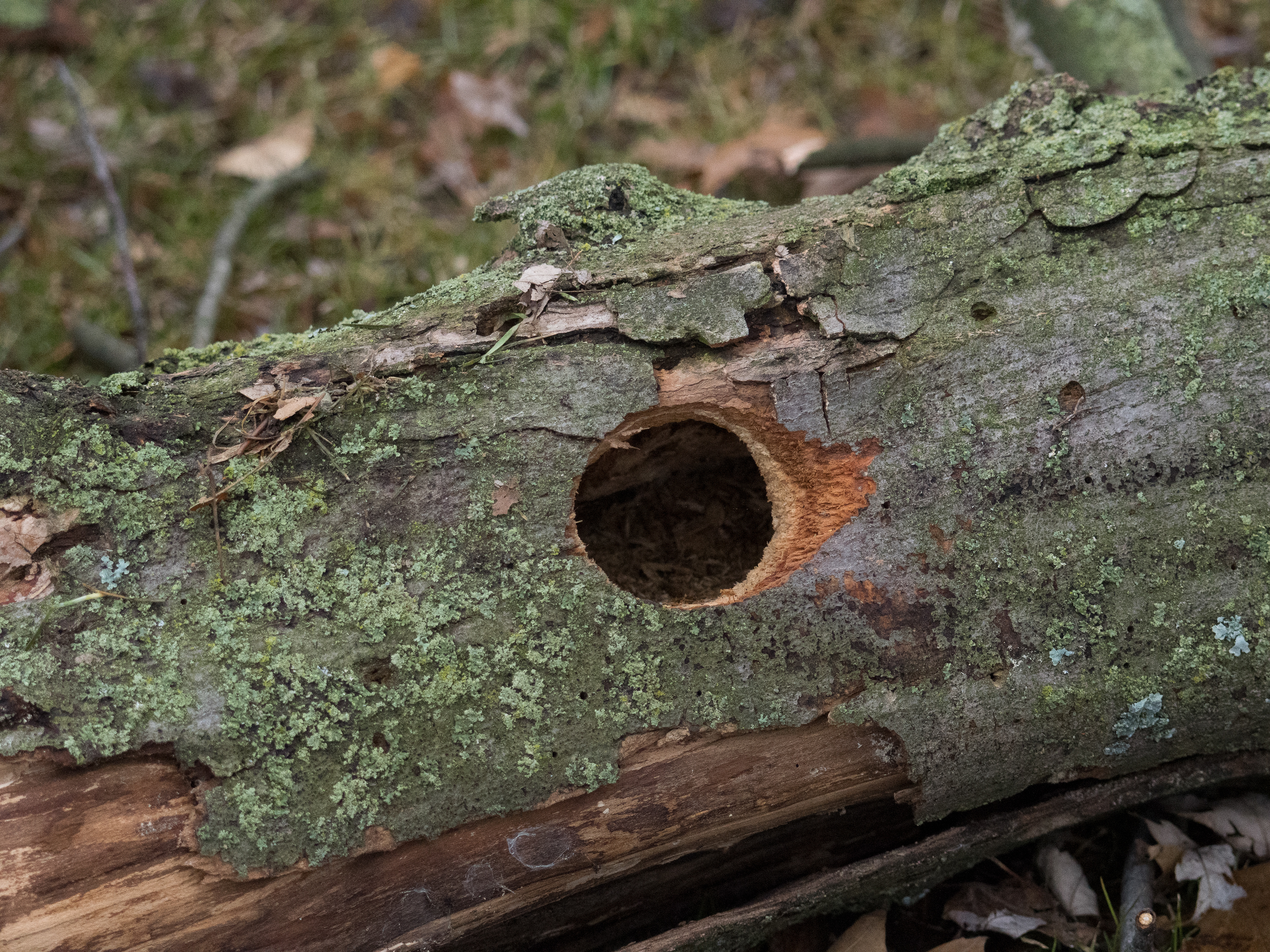
The lens focuses fast and is very crisp, resolving fine details and textures.
While not related to the equipment, I think it's worth mentioning that shooting at high ISOs is not necessarily as concerning as it used to be. Below is a 100% crop (click to enlarge) of showing the original ORF file (ISO 3200) and a resulting DNG version after running the file through Lightroom's AI Denoise at 50%. I also used an AI mask to select just the cardinal, in order to add a bit of Texture and Clarity.
Weight and Handling
Have I mentioned this lens is large and heavy? Especially by Micro four-thirds standards.
But for birding, wildlife, even abstract nature photography, it is a good option, and far less expensive that the 150-400mm pro lens from OM.
I highly recommend attaching a good strap to the lens, either at the tripod foot or by using the built-in eyelets. To their credit, OM Systems does include a strap you can employ, but in my case, I used a Peak Design Slide strap that used to be attached to my Nikon D750. While I’ve never used one, I think a Cotton Carrier rig would also be a good option. Avoid carrying this camera and lens combination in anyway that puts stress on the lens mount; that is the weakest link and where – over time - I imagine things could fail rather catastrophically. When I’m walking around, I often cradle the gear in the crook of my arm. This was a habit I got into with my Zuiko 100-400mm lens. Alternatively, one could also spin the tripod foot around and use it as a carrying handle.
Wrap Up
Overall, I'm pleased with this purchase. I can see me living with this camera for quite some time. I have yet to test out the Live Graduated ND filter and other computational photography features, but if my experience with Live ND, Starry Sky AF and High Res modes on my OM5 are any indication,I will be quite happy with those upgraded features on the OM-1 Mark II. I know I still have much to learn about this camera (and lens) and I'm looking forward to the adventure!
I leave you with a few more images from my first couple shoots with the new camera and lens. I hope you enjoy them and that you've found this article of interest.
Until next time!

